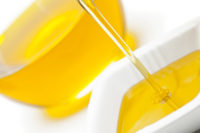Sweeteners
Using polyols to cut calories, sugar
Food and confectionery technologists moderate their approaches to sugar and fat reduction.

This approach takes on even greater weight when working with categories that have large serving sizes, whereby replacement of all of the sugar and/or fat often leads to products that no longer appeal to consumers.
A much more moderate approach — the reduction of calories through partial fat replacement and a 30-50 percent reduction in sugar — has led to more consumer friendly products, which like the 100-calorie packs, have a better chance of acceptance for weight management.
Polyols: Novel sugar replacements
As Ronald Deis, director of global sweetener development for Ingredion, explains, polyols are a group of sugar-replacement ingredients that can work wonders with a “moderation” product development philosophy. Formulating with polyols has become wide accepted, particularly in the confectionery industry where smaller serving sizes are common and sugar-free products are the norm, he adds. In fact, consumers expect their chewing gums and breath fresheners to be sugar-free, and parents even encourage their children to chew these products because of their cariogenic or cairostatic benefits.
But, as Deis points out, polyols deliver functional benefits as well, since they are excellent plasticizers, keeping the gum soft and pliable over time. They also work well with high potency sweeteners, which are commonly used in gums to achieve distinct flavor and sweetness profiles.
In hard-boiled candies, they constitute the bulk of the candy piece, establishing the structure and maintaining that structure through the life of the candy. In addition, when used with other sweeteners, they — as with gums — deliver sweetness and flavor profiles.
In other confections, such as jellies, gummies, taffies, fondants and caramels, certain polyols are integral in establishing the crystalline or semi-crystalline structure that defines a particular confection while other polyols serve to control the rate of crystallinity for shelf-life purposes.
Polyols serve these same purposes and more in nutritional bars, baked goods, ice creams, and other products in many ways. First of all, confectionery products, such as those previously mentioned, are often a defining part of products within these categories, serving as inclusions, variegates, toppings, icings, etc.
Secondly, the same properties as described for confectioneries also apply to baked goods, dairy products, nutritional bars and other categories. As Deis explains, polyols are products created by the hydrogenation of sugars (Figure 1), and they affect polymeric structures in much the same way as their originating nutritional sugars, and often bring more beneficial properties into play as well.
Defining polyols
To better understand polyols, it’s best to divide them into three groups: monomers, dimers, and polymeric mixtures. The monomers — consisting of one carbohydrate unit — are erythritol, mannitol, sorbitol, and xylitol. The dimers — consisting of two bonded carbohydrate units — are isomalt, lactitol, and maltitol.
And the polymeric mixtures are combinations of polyols — varying in lengths of repeating carbohydrate units — that are identified as polyglycitol syrups, also known as hydrogenated starch hydrolysates (HSHs), and maltitol syrups (most similar to corn syrups).
Nomenclature is determined by the amount of maltitol (dry basis) present; a syrup that contains greater than 50% maltitol is considered a maltitol syrup, and anything less is a polyglycitol syrup. It’s important to understand that polyols are not considered sugars because they are not completely digested or absorbed — the majority reaches the large intestine, where bacteria metabolize what has not been absorbed or excreted previously to short-chain fatty acids.
This “laxative” effect is similar to experiences one might have with high fiber foods and the effect is variable depending on what else has been consumed as well as individual sensitivity. The result may be a feeling of fullness, laxation, or gas, and the results are temporary.
How do you avoid this? First, Deis advises technologists to use polyols as a formulating tool to reduce sugar and calories, not to replace sugars entirely (back to the moderation theme), and secondly, know which polyol to use to minimize any tolerance issues.
Calories and sugar can be reduced substantially in many formulations while using polyols at no more than about 10 grams/serving. By contrast, some of the products on the market 10 years ago contained >20 grams/serving, which probably affected sensitive individuals for one serving, but affected many more who might eat two servings in one meal.
Polyols can reduce caloric density in a formulation because often they are ½ the calories of sugar (Table 1). The portfolio of polyols available offers a wide range of properties, which allows convenient replacement of sucrose and sweeteners in many formulations. These polyols vary in caloric density, tolerance (as briefly discussed), solubility, molecular weight, cooling effects as crystalline forms are solubilized, and regulatory status, Deis adds.
Each of the polyols has unique properties, which enhance performance in some applications or require formulation changes in others. In many applications, the molecular weight (MW) of sugar replacers (Table 2) plays a large part in the performance of a product, because the MW influences starch gelatinization temperature, boiling points in fillings and protein denaturation in baked products.
Formulation considerations
In short, polyols provide candy technologists with excellent formulation tools to lower sugar and reduced calories. But, formulators need to remember that polyols are low digestible carbohydrates (LDCs), grouped with other LDCs such as resistant starches; oligosaccharides such as polydextrose and fructooligosaccharides; polysaccharides such as pectins, inulin and celluloses; and are sugars such as trehalose.
Within this grouping and versus many fibers, many polyols are comparatively well tolerated, Deis says. Proper use will minimize tolerance concerns, and the correct choice of polyols to accomplish calorie and sugar reduction will result in an end product that processes easily, has a great appearance, and is enjoyed by the consumer. Naturally, Ingredion’s sweetener technical team has the experience and development tools to help you find the right carbohydrate system for your products.
Looking for a reprint of this article?
From high-res PDFs to custom plaques, order your copy today!








